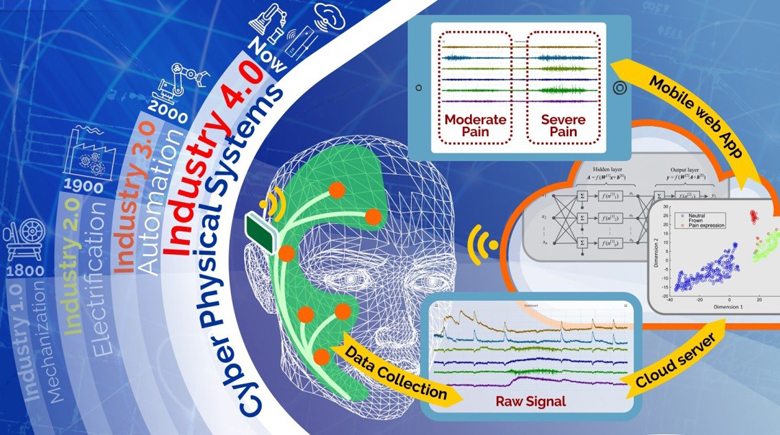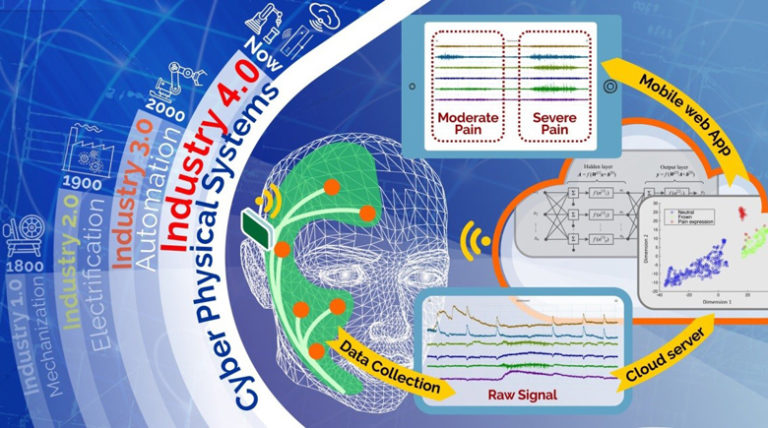
Pain prompts the body to react and prevent further tissue damage. It should be controlled timely and adequately to promote the tissue damage healing process as well as well-being. Valid and reliable assessment of pain is a crucial prerequisite to proper pain management. Among the behavioral pain indicators in the patients who unable to provide self-report, facial expressions of pain can be measured quantitatively, recorded and analyzed with the method of surface electromyography (sEMG). However, there is so for no wearable solution to apply facial sEMG in pain assessment. Furthermore, systems monitoring pain remotely and continuously are scarcely discussed primarily for the patient populations having a limited self-report ability. To fill these gaps, we design a wearable device to capture facial expressions using sEMG and integrate the wearable device into our remote monitoring system.
The designed wearable facial sEMG device consists of a soft facial mask made by polydimethylsiloxane (PDMS) and a small battery-powered sensor node. The facial mask is embedded with pre-gelled Ag/AgCl electrodes covering six main facial muscular areas on one side face. Facial muscle movements are detected as analog biopotentials. Raw biopotentials are conditioned and digitalized at the sensor node before being wirelessly transmitted to the remote pain monitoring system. A sensor node-gateway-cloud-mobile web application architecture is utilized in the system to embody the concept of Internet-of-Things (IoT). Within the system, the captured sEMG signals are sent to the database in the cloud server through a gateway and are then synchronized to and visualized in the web-based graphical user interface at the user end.
By proposing an architecture solution to an application of remote healthcare monitoring in real-time, this work provides the potential of a more versatile system with dedicated data analysis algorithms in future implementations.

